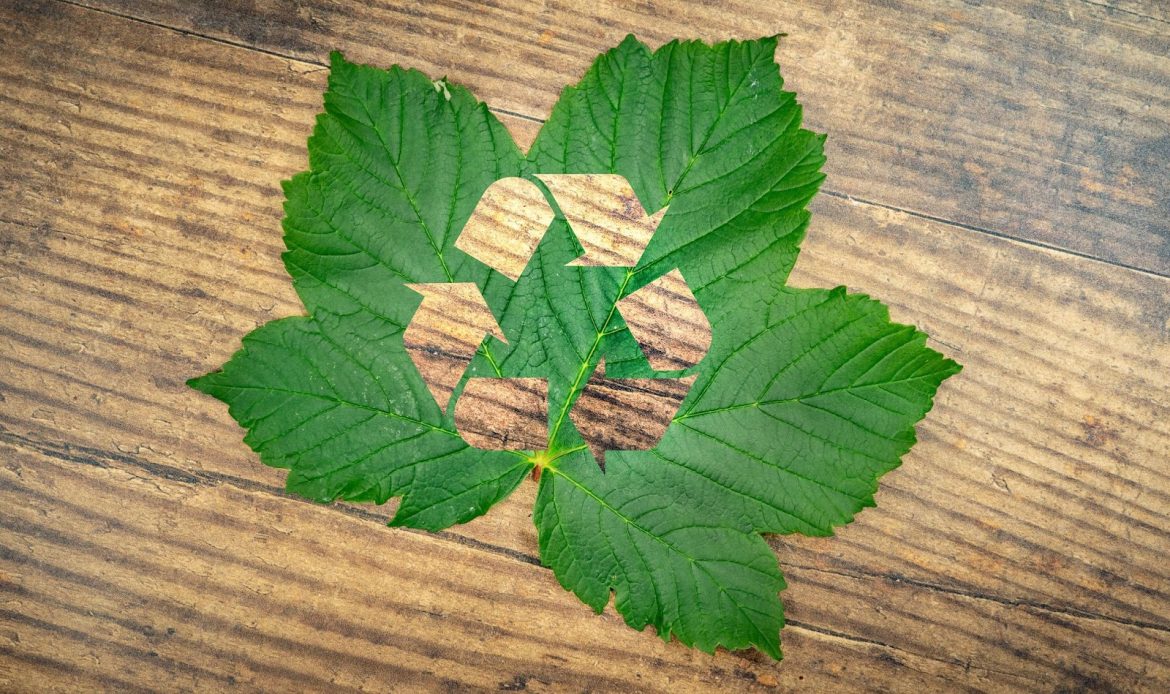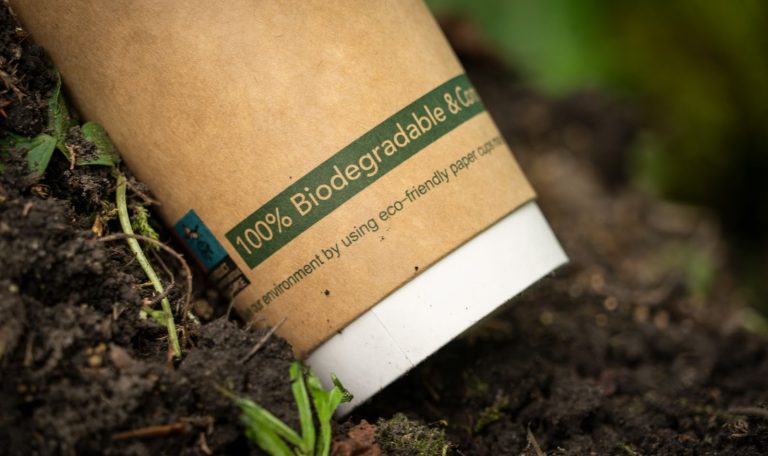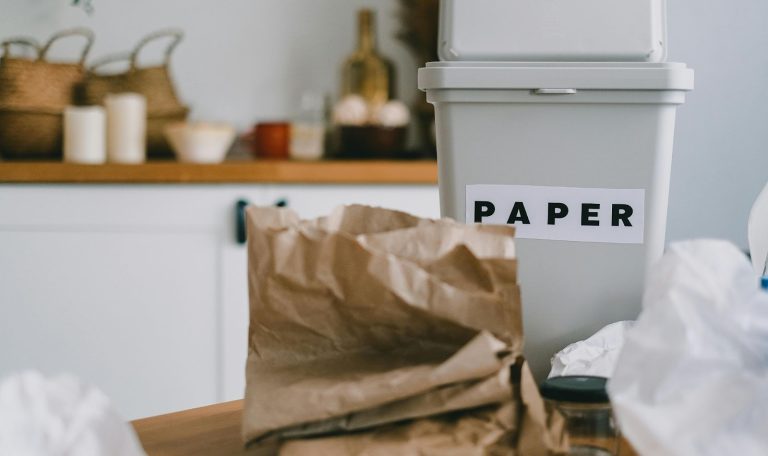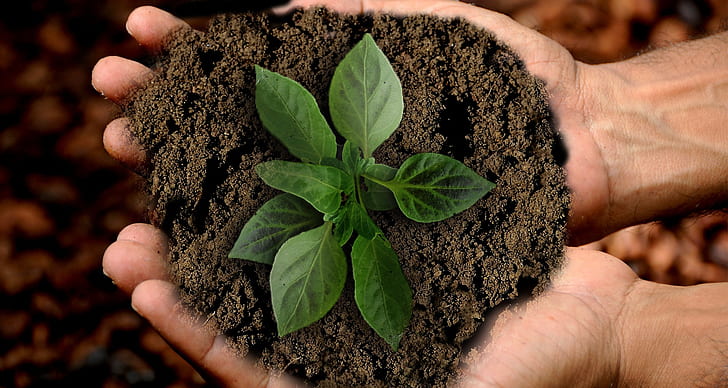
Durable packaging is important for protecting products during the shipping process, but after a consumer opens up their package and takes the product out, the packaging is going straight in the bin, and eventually, into a landfill — where it’s going to stay for years and years. This has a big impact on our planet.
Fortunately, your business has the power to end the cycle of planet destruction by using sustainable and biodegradable materials in your packaging.
Sustainability was the hot topic of 2023 and in 2024, it’s no longer a buzzword. Sustainable packaging is a key factor for plenty of consumers and their purchasing decisions. And this level of influence grows day by day as people become more aware of the environmental effects of materials like single-use plastic and synthetic fibres.
Researchers report that 64% of consumers feel that it’s important for product packaging to have recycled content, and that 23% are more likely to pay for sustainable packaging solutions.
Using environmentally friendly packaging materials is more important than ever. This article will walk you through what sustainable packaging is, how it compares to traditional packaging, how different industries have been using eco friendly packaging materials, the benefits of sustainability in packaging, and how your business can implement environmental packaging effectively.
What Is Sustainable Packaging?
Sustainable packaging is made from biodegradable, recycled, or recyclable components, such as paper, bioplastics, and other natural substances like seaweed and bamboo.
Switching to sustainable packaging demonstrates a business’ commitment to protecting the environment, reducing waste, conserving resources, and lessening pollution, plus giving consumers an easier way to improve their own sustainability efforts.
It’s not just about the materials being used either. It also involves the processes of creating, using, and disposing of said materials responsibly.
What Is Sustainable Packaging Made Of?
Environmentally friendly packaging is made from a variety of eco-friendly materials. These can include:
- Recycled plastics: PET and HDPE plastics that are reprocessed to be used in new packaging.
- Cardboard and paper: These are often sourced from recycled materials and they can be recycled again after being used.
- Biodegradable materials: Plant-based materials like PLA (polylactic acid) come from cornstarch, cellulose, or other natural sources that break down easily.
- Compostable materials: Materials such as PLA or certain types of paper break down completely in compost conditions and it turns into nutrient-rich soil.
Materials like these are used in packaging across different industries, from food and fashion to e-commerce. This helps businesses effectively maintain packaging quality while being environmentally responsible.
Why Is Packaging Sustainability Important & Why Do We Need It?
Business’ shift towards sustainable packaging is driven by a growing awareness of the negative environmental impact of traditional packaging. Plastic waste is a major problem especially. It ends up in landfills and pollutes oceans and the air we breathe.
Consider these facts from the UN Environment Programme:
- We produce about 400 million tonnes of plastic waste each year.
- There is about 75-199 million tonnes of plastic in our oceans.
- 85% of single-use plastic packaging ends up as unregulated waste or in a landfill.
- Some 98% of single-use plastic products come from fossil fuel.
These facts are worrying, but in spite of that, online shopping isn’t slowing down anytime soon. As it continues to rise, the demand for packaging has also skyrocketed. It makes the need for sustainable alternatives even more urgent.

Benefits Of Sustainability Packaging For Your Business
Customers care about the environment and it directly affects the brands and products that they are loyal to. Going with sustainable packaging says a lot about how you market your products and how you fulfil your corporate responsibility.
The best part about using eco friendly packaging materials is that it gives your business a lot of advantages while simultaneously helping the environment.
1. Lessens carbon footprint
Eco friendly consumers are conscious of the carbon footprint and that of any commodity they purchase.
Carbon footprint is the level of carbon dioxide that your business puts into the atmosphere when it’s consuming fossil fuels. Sustainable packaging tends to use recyclable, biodegradable, or renewable materials.
Adopting sustainable practices helps your business align with the growing consumer sentiment.
2. Positive brand reception
Sustainable packaging practices help with positive brand perception. Eco-conscious consumers research the companies they buy from. They would appreciate real, conscious, tangible attempts to lessen environmental damage. It improves a brand’s overall image and builds trust and loyalty within its client base.
3. Competitive advantage
For consumers doing their shopping, they have no shortage of options. How will your business stand out from the rest of the competition?
Adopting sustainable packaging can be one of the factors that set you apart from your competitors. It’s a strategic differentiator that appeals to conscious consumers who are looking for environmentally friendly options. You not only attract new customers, you retain your existing ones too.
4. Cost-efficient solutions
A common misconception is that sustainable packaging costs more. It’s true that you need to put down an initial investment when making the shift to using sustainable materials, but it results in long-term cost savings.
For instance, using recyclable materials often costs less than producing new packaging from raw materials.
5. Mitigate risks and comply with government regulations
Environmental awareness is more important than ever before. As many governments around the world intensify their focus on environmental regulations, businesses that proactively shift to green packaging position themselves for a future where they can navigate regulatory landscapes more effectively.
Staying ahead of government regulations can help businesses steer clear of potential legal issues and reputational damage.
Sustainable Packaging Across Many Industries
The seamless switch to sustainability needs research. It needs to complement your brand and your existing packaging design. What are the challenges and how are different industries navigating it?
- Food and Beverage: The food and beverage industry faces unique challenges. They need packaging that protects perishable products. Sustainable options include biodegradable materials, compostable packaging, and reusable containers.
- Consumer Goods: The packaging used for consumer goods, like electronics and toys, often involve plastic materials. Sustainable alternatives include recycled plastics, bio-based materials, and minimal packaging designs.
- Pharmaceuticals: Product safety and integrity is a requirement in packaging pharmaceutical products. Sustainable options include recyclable materials, reusable containers, and innovative packaging designs that minimise waste.
- Fashion and Beauty: Plastic bags and wrapping materials are common packaging materials in the fashion and beauty industry. Over 150 billion plastic packaging bags are used every year in this sector alone, and many of them end up in landfills. Sustainable alternatives, like compostable or recycled bags, provide an eco-friendly solution.
- E-commerce: Sustainable practices in the e-commerce industry include using recyclable or reusable shipping materials, reducing void fill, and optimising package sizes.ventory turnover ratios down to SKU level, which lets you identify products that are not delivering sufficient ROI.
How To Implement Sustainable Packaging In Your Business
To implement eco packaging successfully, your business needs to plan carefully, and here’s the basic step-by-step guide on how to do that.
Step 1: Think of your packaging needs.
Assess what packaging materials you currently use and evaluate their environmental impact. Consider whether you can replace them with compostable, biodegradable, or recyclable alternatives, or if you would prefer to partner up with a fulfilment centre that uses sustainable packaging when shipping your orders.
Step 2: Find the right suppliers and shipping partners.
Work with suppliers and fulfilment centres that specialise in eco-friendly packaging solutions. Make sure the materials meet your quality standards while aligning with your business’ sustainability goals.
Step 3: Test your packaging.
Before making a company-wide switch to sustainable packaging materials, test the new materials to make sure that they meet your product needs in terms of durability, shelf life, and presentation.
Step 4: Educate your customers.
Communicate your sustainable packaging efforts to your customers. Not only does it boost your brand image, it also encourages consumers to properly dispose of or recycle the packaging that comes with the products they buy.
Step 5: Measure the impact of your efforts.
Track your progress by measuring how much waste your business is reducing through the use of sustainable packaging. You can use this data to further refine your sustainability efforts.

Popular Environmentally-Friendly Packaging Materials To Consider
Here are some of the most popular sustainable packaging materials being used.
1. Recycled packaging
Think of these as items that give a second life to plastics that are already in the world. Using recyclable materials lets your business conserve natural resources, minimise the amount of waste that goes into landfills, and prevents pollution by limiting the need to harvest raw materials.
2. Corrugated packaging
This type of packaging is widely used in the industry and plenty of online sellers have been using it to package and ship their products. Corrugated packaging refers to box fibres made from trees and old corrugated containers. They can be used 7-10 times to make new packaging materials. More corrugated packaging is recovered for recycling than any other packaging material.
3. Compostable packaging
This refers to the ability of a material to decompose naturally into the earth without leaving toxic residues behind. Compostable packaging materials are made from plant-based materials, like sugar cane, corn, or bamboo.
For a material to be truly considered compostable, it should break down in home compost within 180 days and 90 days for commercial composting.
4. Cellulose packaging
Cellulose packaging is biodegradable and compostable. It’s a sustainable alternative to plastic and it’s made from natural sources such as wood, hemp, and cotton. Lots of food brands generally prefer cellulose packaging because it’s moisture-resistant.
5. Kraft paper
Unlike regular paper, kraft paper uses different types of wood like resinous pine, which is usually left out when creating regular paper products. Kraft paper comes from wood pulp. And the best part is that almost all of the chemicals that go into making kraft paper can be reused — truly a more sustainable manufacturing process.
6. Cornstarch packaging
Cornstarch packaging materials come from renewable sources. It doesn’t have harmful toxins, which makes them biodegradable and more sustainable. Cornstarch can also be used to create packing peanuts, which are great alternatives to bubble wrap and styrofoam.
7. Glassine packaging
If you want transparent paper packaging, the sustainable material to use is glassine. It is a smooth and glossy paper created from wood pulp. Glassine is recyclable and biodegradable, and it’s also pH neutral and acid-free.
Frequently Asked Questions
What are the 5 R’s of sustainable packaging?
The 5 R’s of sustainable packaging are:
- Reduce is about minimising the amount of packaging used.
- Reuse means using packaging materials multiple times.
- Recycle is all about making sure that packaging materials can be recycled and processed.
- Refuse means avoiding unnecessary packaging.
- Rethink means considering alternative packaging options that are more sustainable.
What is the most sustainable way of packaging?
The most sustainable way of packaging actually depends on various factors, including the product, its intended use, and local recycling infrastructure. Some general principles to remember are:
- Using minimal packaging and reducing the amount of material used.
- Choosing materials that are recyclable.
- Using containers or packaging that can be reused multiple times.
- Considering biodegradable or compostable materials that break down naturally.
- Avoiding excessive or unnecessary packaging.
How do you know if packaging is sustainable?
To determine if packaging is sustainable, research its material composition. Were the materials made from recyclable or biodegradable materials? Find out if the packaging can be easily recycled in your local area, or if it can be reused or repurposed.
Think about the packaging material’s environmental impact as well. Consider if it contributes to pollution, waste, or greenhouse gas emissions. And lastly, check if the packaging complies with governmental environmental regulations.
Can all packaging be made sustainable?
Not all packaging can be completely sustainable. However, businesses can take significant steps to reduce their environmental impact by doing other eco-friendly initiatives and incorporating more eco-friendly materials where possible.
How do I dispose of compostable packaging?
Compostable packaging can be disposed of in home or industrial composting facilities. Disposing of it properly allows compostable packaging to break down into nutrient-rich soil. Always check with your local waste management provider to see if they accept compostable materials.
Is biodegradable the same as compostable?
No, they’re not the same. Biodegradable materials break down naturally over time, but they may not enrich the soil like compostable materials do. Compostable materials specifically break down into organic matter that benefits the environment.

Final Thoughts
Sustainable packaging is the best practical solution for a business that wants to reduce their environmental impact while meeting the growing consumer demand for eco-friendly practices.
Using compostable, recyclable, or biodegradable materials empowers your business to be part of the solution to the world’s environmental problems. And these are the same principles that Green Fulfilment lives by. All our fulfilment centres across the UK aim to contribute to a healthier planet and a more sustainable future.
Let us embrace this change and make a positive impact together — both for your business and the environment.
